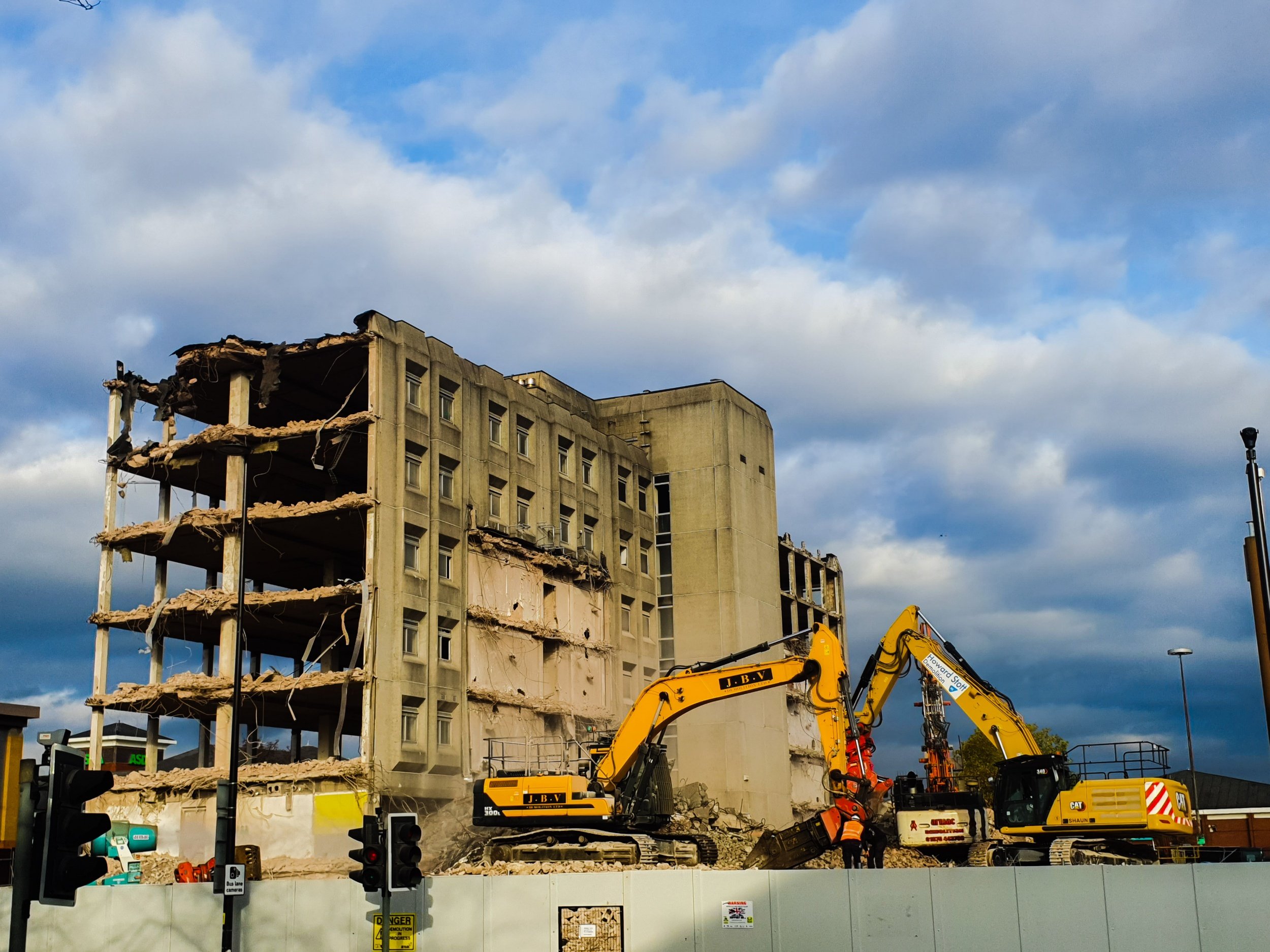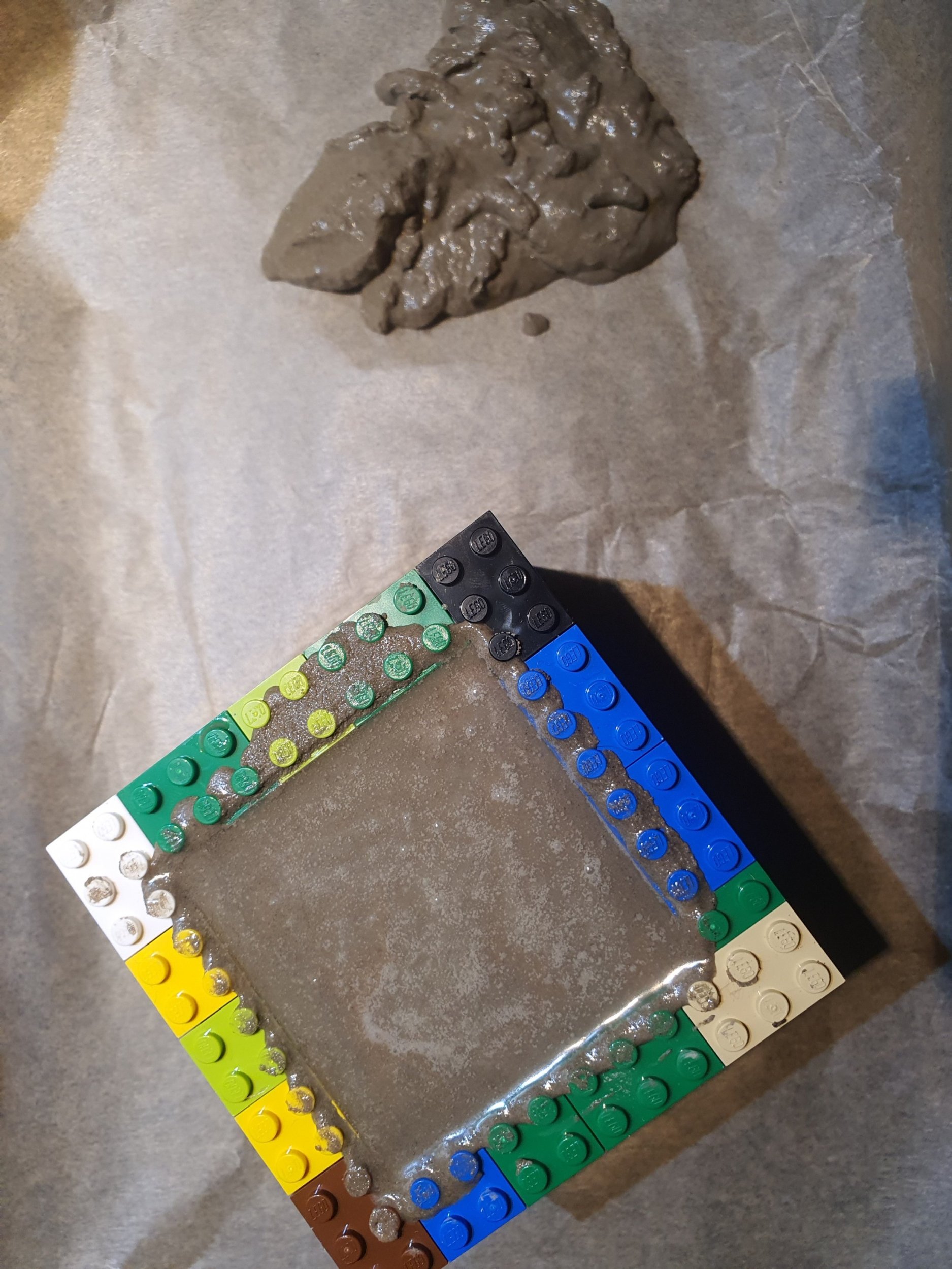Since being drawn to the demolition site in Warrington, I have been keen to explore the parallels with our fragmented society. To begin with, I decided to recreate a section of the building in the original image.
After some thought, I felt I wanted to replicate the original material as closely as possible, so settled on concrete. The controversy over this material, was also interesting in relation to the political and economic connections, which I will explore shortly. In the meantime, I realised that the aggregate needed for concrete would be too much for the small cavities in the mould. I decided to experiment with a mortar mix of sand and cement instead, as it will not need the structural integrity of concrete.
The mould was probably the most difficult aspect of this experiment. I considered various materials, including wood, but further investigation led me to using lego. I hunted around for a couple of days and was lucky enough to find a small box in a charity shop in Carnforth for £5. My first attempt was a little too small, as the cavities were probably too narrow, so I attempted it again with wider cavities for the walls.
The mould was created upside down, so the floor of the final prototype would be at the top.
Next, to mix the cement!
I managed to find a 5kg tub of mortar mix (sand and cement) at my local Screwfix. I calculated that I only needed about 100g with 10ml of water. I mixed it until I got the right consistency, but it was approximate. At this point, I was super excited to pour and almost forgot to lubricate the inside of the mould, which I did using vaseline. I laid the lego mould on a piece of greaseproof paper and poured the mix, agitating it as I went, to get as many air bubbles out as possible.
I was really pleased with the pouring. There was very little leakage through the lego, and after several hours, it has held up very well. I just have to stop watching it and patiently wait!




Leave a comment